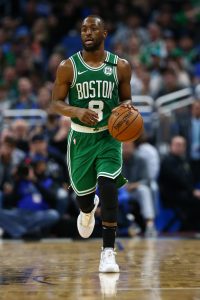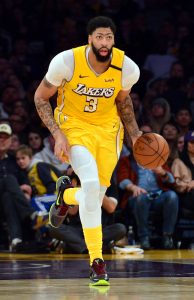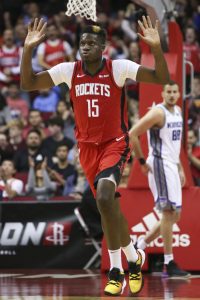For most NBA players in contract years, their on-court performances during the 2019/20 season will go a long way toward determining what sort of offers they’ll get this offseason when they reach the open market. And there are a number of players around the league who have increased their value significantly with their play in ’19/20, who now figure to do better than initially expected in free agency as a result.
Today, we’ll shine a spotlight on some of those players from the Eastern Conference, identifying five 2020 free-agents-to-be who have improved their stock with their play this season. Let’s dive in…
 Fred VanVleet, PG (Raptors): VanVleet’s value was already on the rise last summer as a result of his red-hot shooting in the final two rounds of the 2019 playoffs, but he has taken his game to another level this season. Having averaged 11.0 PPG last year, VanVleet has bumped that number to 17.6 PPG in 2019/20, adding 6.6 APG and an impressive .388 3PT% on increased volume. Although Kyle Lowry remains the Raptors’ starting point guard, VanVleet has started alongside him or – when Lowry was injured – in place of him in every single one of his 48 games this season, alleviating any concerns that he’s just a sixth man. After All-Stars Anthony Davis and Brandon Ingram, he’ll be one of the most sought-after players on the market.
Fred VanVleet, PG (Raptors): VanVleet’s value was already on the rise last summer as a result of his red-hot shooting in the final two rounds of the 2019 playoffs, but he has taken his game to another level this season. Having averaged 11.0 PPG last year, VanVleet has bumped that number to 17.6 PPG in 2019/20, adding 6.6 APG and an impressive .388 3PT% on increased volume. Although Kyle Lowry remains the Raptors’ starting point guard, VanVleet has started alongside him or – when Lowry was injured – in place of him in every single one of his 48 games this season, alleviating any concerns that he’s just a sixth man. After All-Stars Anthony Davis and Brandon Ingram, he’ll be one of the most sought-after players on the market.- Davis Bertans, PF (Wizards): Like VanVleet, Bertans had shown his potential in previous seasons before getting a chance to take on an increased role in ’19/20. And like VanVleet, he hasn’t sacrificed any efficiency as he has taken on those added responsibilities. Bertans is the best 6’10” shooter in the league, with a .424 3PT% on 8.7 attempts per game, and while he’s not exactly an elite rim protector, he isn’t a major liability on defense either. After earning $7MM this season, Bertans could double that annual salary on a multiyear contract. The Wizards, who turned down trade offers for him at the deadline, are very interested in retaining him.
- Christian Wood, F/C (Pistons): After bouncing around on minimum-salary contracts and waiver claims during his first three NBA seasons, Wood enjoyed a breakout year in Detroit, averaging 13.1 PPG and 6.3 RPG in a part-time role (21.4 MPG). Those numbers jumped to 22.8 PPG and 9.9 RPG following Andre Drummond‘s departure in February. And after making just 13 three-pointers in his first 51 NBA games, Wood knocked down nearly one per game in 2019/20, at a 38.6% rate. While he probably won’t get any massive offers, a deal in the range of the full mid-level exception seems realistic.
- Evan Fournier, G/F (Magic): One of the beneficiaries of the 2016 cap spike, Fournier earned $17.15MM this past season and has a player option worth the same amount for 2020/21. Given how uncertain the NBA’s salary cap situation is at the moment, it’s possible Fournier won’t exceed that salary on the open market and could decide to simply opt in. Still, his stock is higher now than it was a year ago — his 18.8 PPG represented a career high, as did his .599 TS%. It was a much-needed bounce-back performance for Fournier after he endured perhaps the worst shooting season of his career in 2018/19.
- Derrick Jones, G/F (Heat): Jones’ numbers don’t jump off the page like the ones put up by some other players on this list, but Erik Spoelstra‘s confidence in the young swingman reflects his value to the Heat. Despite the arrival of Jimmy Butler, the emergence of youngsters like Duncan Robinson and Kendrick Nunn, and the midseason additions of veterans such as Andre Iguodala and Jae Crowder, Jones was a consistent part of the rotation all season long and became a starter prior to the hiatus. He averaged a career-high 24.5 minutes per game and was one of the club’s most reliable defenders. A more consistent three-point shot would boost Jones’ value further, but his age (23), athleticism, and versatility will make him an intriguing target this offseason, especially for rebuilding teams.
Photo courtesy of USA Today Sports Images.
 While teams can use their entire mid-level exception to sign one player, as the Magic did this season with
While teams can use their entire mid-level exception to sign one player, as the Magic did this season with 
 No cap hold can exceed the maximum salary for which a player can sign. For instance, the cap hold for a Bird player with a salary above the league average is generally 150% of his previous salary, as noted above. But for someone like
No cap hold can exceed the maximum salary for which a player can sign. For instance, the cap hold for a Bird player with a salary above the league average is generally 150% of his previous salary, as noted above. But for someone like 